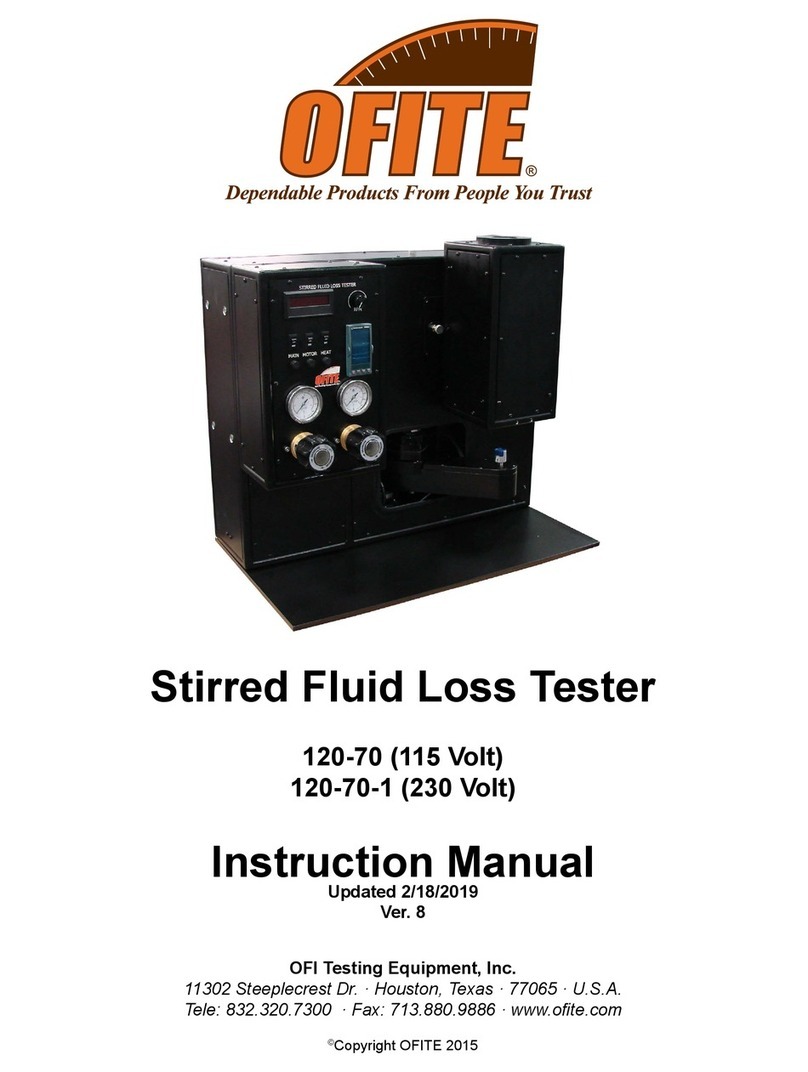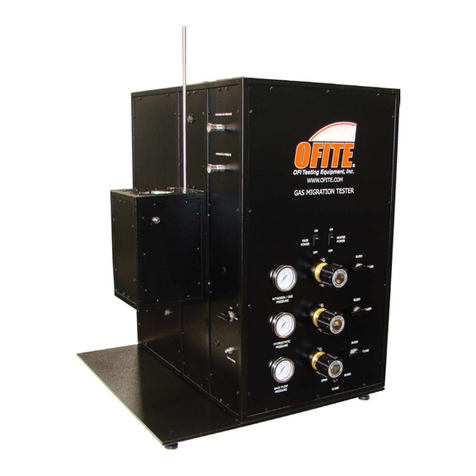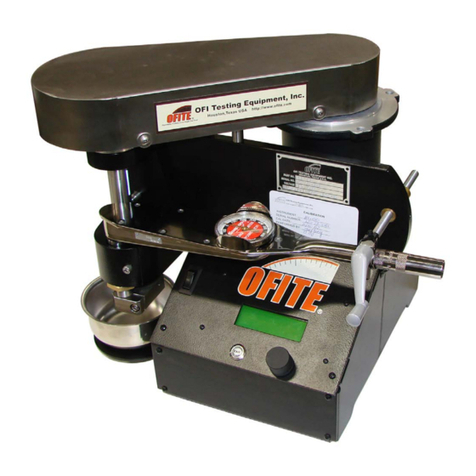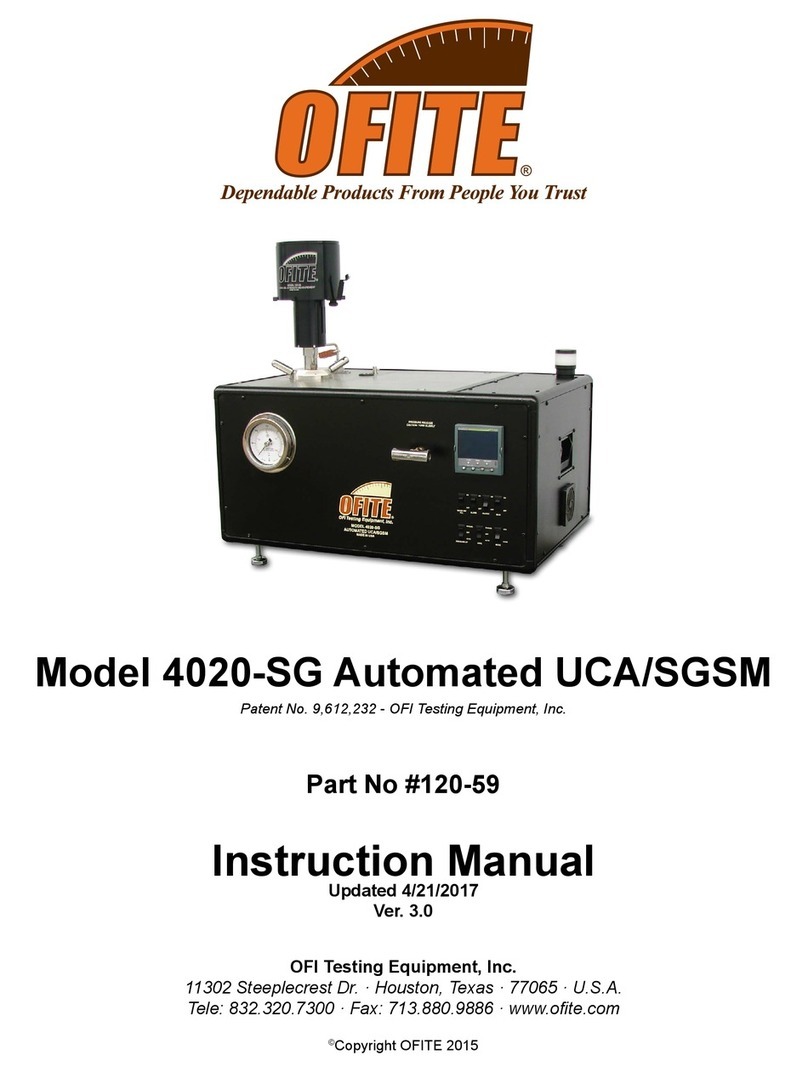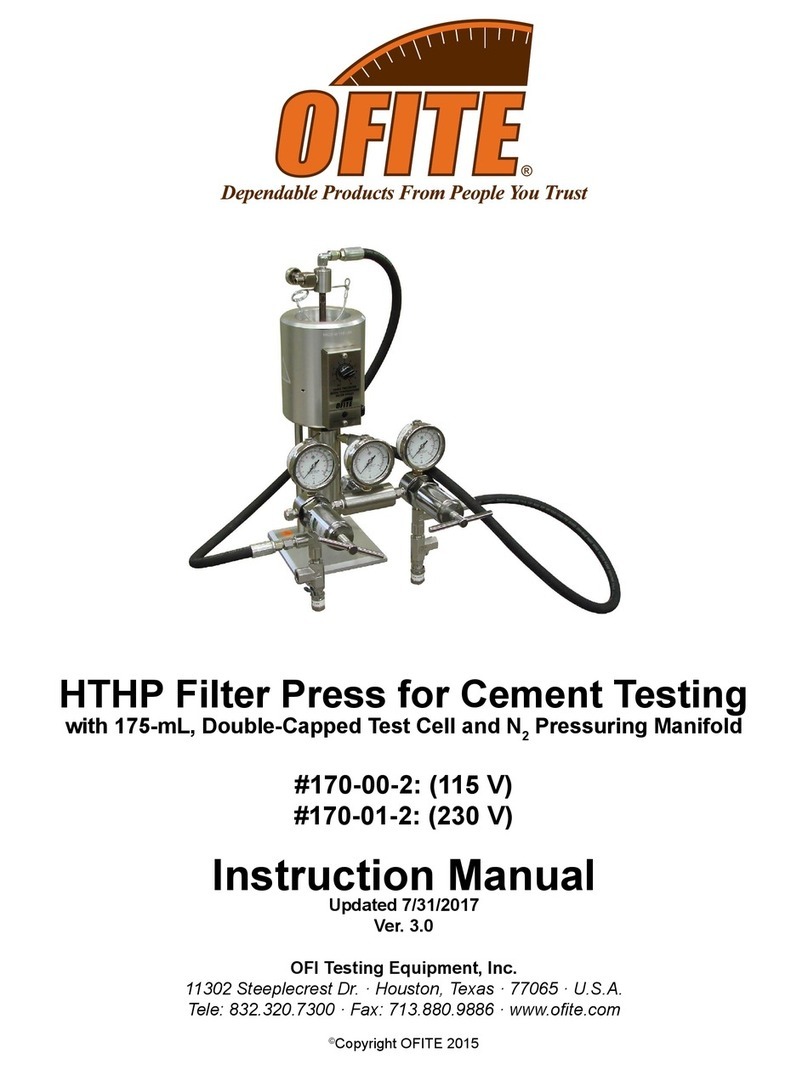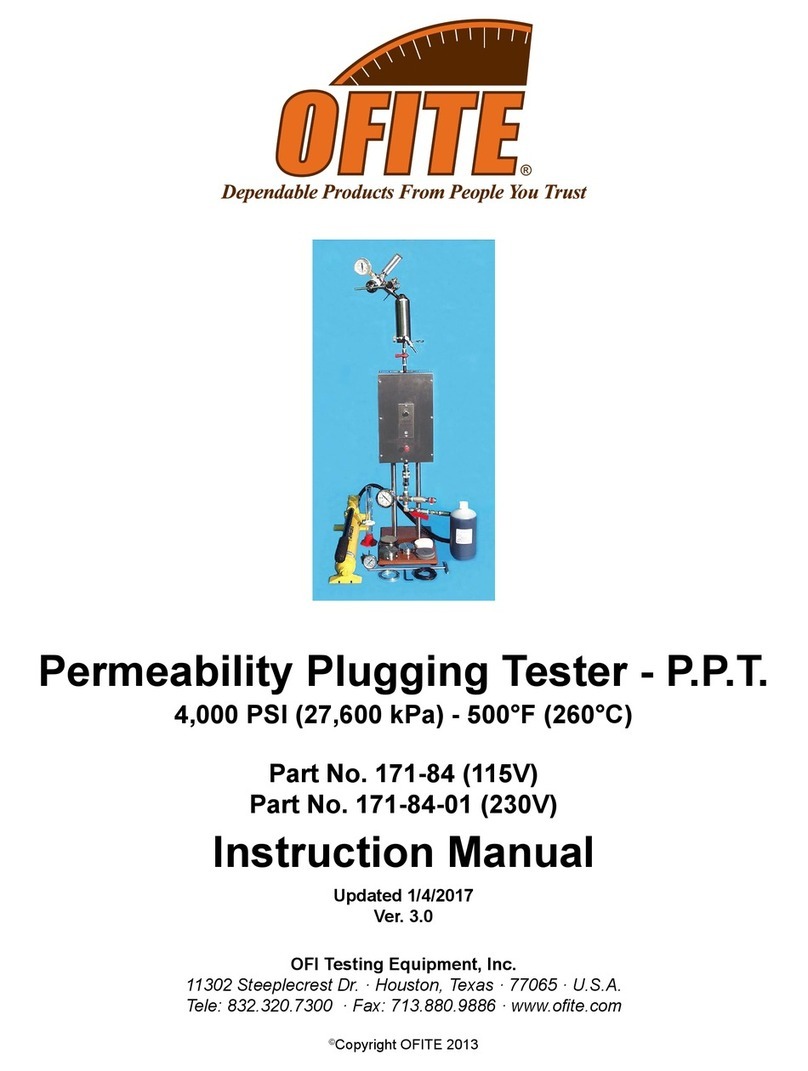When there is relative motion between two contacting bodies, frictional
forces that resist motion always come into play. Frictional resistance to
rotation of the drill string is called torque, and is especially enhanced when
drilling a deviated hole. Many different materials, such as graphite, fine
mica, and diesel or crude oil, have been used as mud additives to improve
lubricity. Since evaluation of the various materials cannot realistically be
done on a drilling rig, a lubricity test was designed to simulate the speed of
rotation of the drill pipe and the pressure with which the pipe bears against
the wall of the bore hole. The OFITE combination EP (Extreme Pressure)
and Lubricity tester is a high-quality instrument used to measure the lubri-
cating quality of drilling fluids, provide data to evaluate the type and quanti-
ty of lubricating additives that may be required, and predict wear rates of
mechanical parts in known fluid systems. The test consists of measuring
the torque of a steel block while being pressed against a rotating steel ring.
The torque limit is 600 inch-pounds.
Lubricity (Surface to Surface Drag) Test
The more common lubricity test measures fluid resistance of various lubri-
cating additives. For the standard lubricity coefficient test, 150 inch-pounds
of force (the equivalent of 5,000 to 10,000 PSI (34,500 - 69,000 kPa) pres-
sure on the intermediate fluid) are applied between two hardened steel sur-
faces, a block, and a ring rotating at 60 RPM.
EP (Extreme Pressure) Test
This test produces an indication of the film strength of the fluid being tested
by applying a measured force to a torque-sensitive bearing cup with the
torque arm. The EP test is typically run at a high shear rate, 1,000 RPM,
with fluid pressures ranging from 5,000 to 10,000 PSI (34,500 - 69,000
kPa) between the steel surfaces.
- Belt-Driven Motor: ½ hp, 90 Volt DC, 5.5 Amps
- Maximum 600 inch-pounds of torque
- 1,000 RPM Maximum
- Size: 19" × 15" × 14" (48.3 × 38.1 × 35.6 cm)
- Weight: 56 lbs. (25.4 kg)
OFITE, 11302 Steeplecrest Dr., Houston, TX 77065 USA / Tel: 832-320-7300 / Fax: 713-880-9886 / www.ofite.com 2
Specifications
Description
Introduction

















